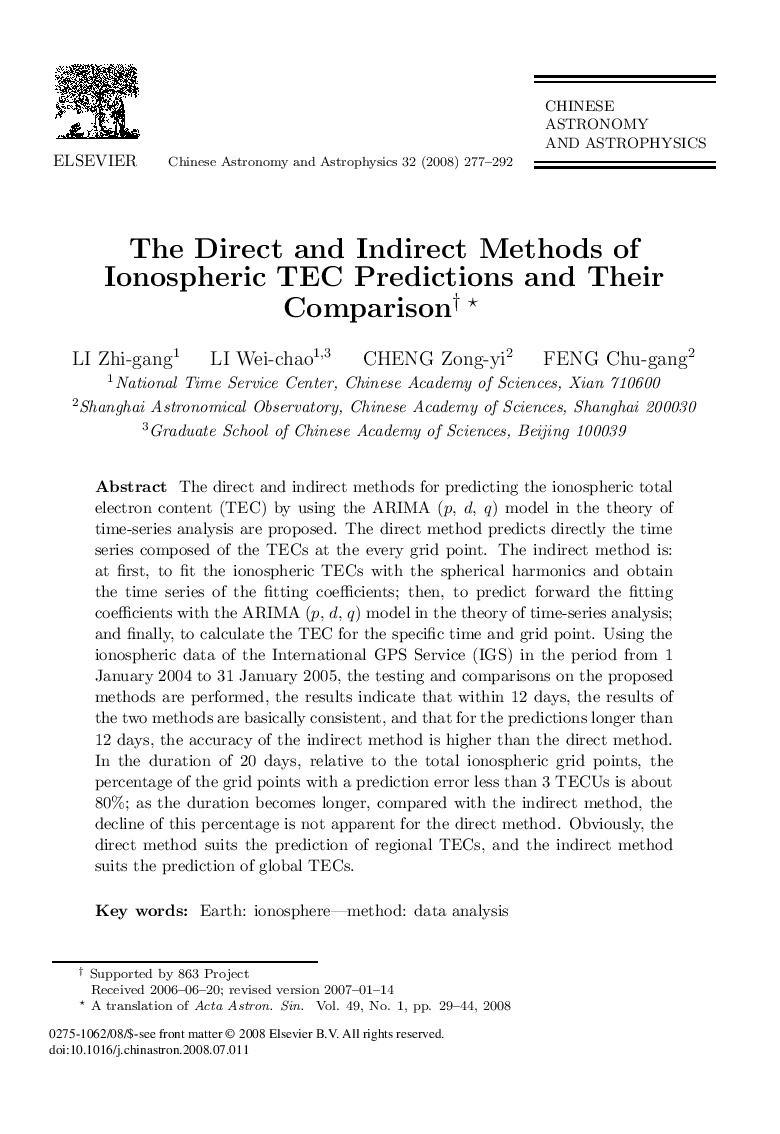| Article ID | Journal | Published Year | Pages | File Type |
|---|---|---|---|---|
| 1772002 | Chinese Astronomy and Astrophysics | 2008 | 16 Pages |
The direct and indirect methods for predicting the ionospheric total electron content (TEC) by using the ARIMA (p, d, q) model in the theory of time-series analysis are proposed. The direct method predicts directly the time series composed of the TECs at the every grid point. The indirect method is: at first, to fit the ionospheric TECs with the spherical harmonics and obtain the time series of the fitting coefficients; then, to predict forward the fitting coefficients with the ARIMA (p, d, q) model in the theory of time-series analysis; and finally, to calculate the TEC for the specific time and grid point. Using the ionospheric data of the International GPS Service (IGS) in the period from 1 January 2004 to 31 January 2005, the testing and comparisons on the proposed methods are performed, the results indicate that within 12 days, the results of the two methods are basically consistent, and that for the predictions longer than 12 days, the accuracy of the indirect method is higher than the direct method. In the duration of 20 days, relative to the total ionospheric grid points, the percentage of the grid points with a prediction error less than 3 TECUs is about 80%; as the duration becomes longer, compared with the indirect method, the decline of this percentage is not apparent for the direct method. Obviously, the direct method suits the prediction of regional TECs, and the indirect method suits the prediction of global TECs.
